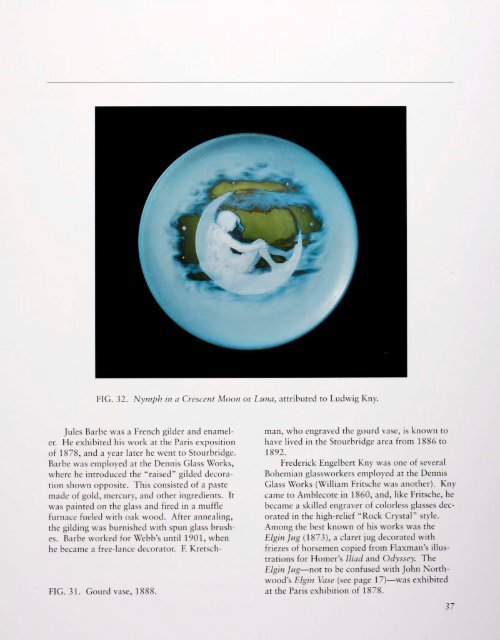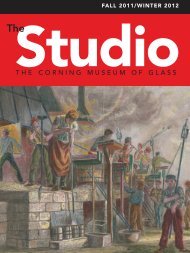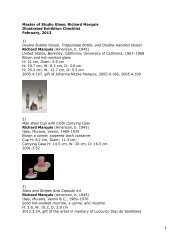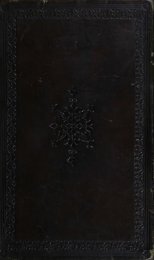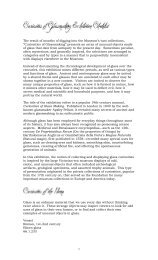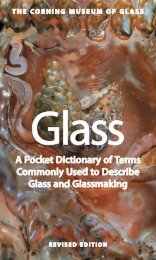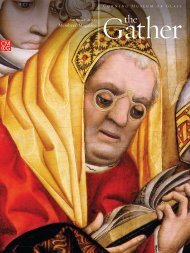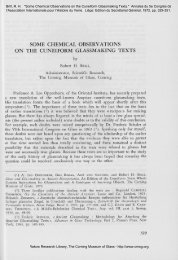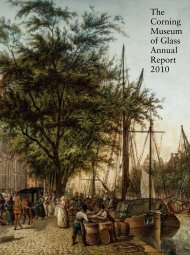english cameo glass in the corning museum of glass
english cameo glass in the corning museum of glass
english cameo glass in the corning museum of glass
You also want an ePaper? Increase the reach of your titles
YUMPU automatically turns print PDFs into web optimized ePapers that Google loves.
FIG. 32. Nymph <strong>in</strong> a Crescent Moon or Luna, attributed to Ludwig Kny.<br />
Jules Barbe was a French gilder and enameler.<br />
He exhibited his work at <strong>the</strong> Paris exposition<br />
<strong>of</strong> 1878, and a year later he went to Stourbridge.<br />
Barbe was employed at <strong>the</strong> Dennis Glass Works,<br />
where he <strong>in</strong>troduced <strong>the</strong> "raised" gilded decoration<br />
shown opposite. This consisted <strong>of</strong> a paste<br />
made <strong>of</strong> gold, mercury, and o<strong>the</strong>r <strong>in</strong>gredients. It<br />
was pa<strong>in</strong>ted on <strong>the</strong> <strong>glass</strong> and fired <strong>in</strong> a muffle<br />
furnace fueled with oak wood. After anneal<strong>in</strong>g,<br />
<strong>the</strong> gild<strong>in</strong>g was burnished with spun <strong>glass</strong> brushes.<br />
Barbe worked for Webb's until 1901, when<br />
he became a free-lance decorator. F. Kretsch-<br />
FIG. 31. Gourd vase, 1888.<br />
man, who engraved <strong>the</strong> gourd vase, is known to<br />
have lived <strong>in</strong> <strong>the</strong> Stourbridge area from 1886 to<br />
1892.<br />
Frederick Engelbert Kny was one <strong>of</strong> several<br />
Bohemian <strong>glass</strong>workers employed at <strong>the</strong> Dennis<br />
Glass Works (William Fritsche was ano<strong>the</strong>r). Kny<br />
came to Amblecote <strong>in</strong> 1860, and, like Fritsche, he<br />
became a skilled engraver <strong>of</strong> colorless <strong>glass</strong>es decorated<br />
<strong>in</strong> <strong>the</strong> high-relief "Rock Crystal" style.<br />
Among <strong>the</strong> best known <strong>of</strong> his works was <strong>the</strong><br />
Elg<strong>in</strong> Jug (1873), a claret jug decorated with<br />
friezes <strong>of</strong> horsemen copied from Flaxman's illustrations<br />
for Homer's Iliad and Odyssey. The<br />
Elg<strong>in</strong> Jug—not to be confused with John Northwood's<br />
Elg<strong>in</strong> Vase (see page 17)—was exhibited<br />
at <strong>the</strong> Paris exhibition <strong>of</strong> 1878.


